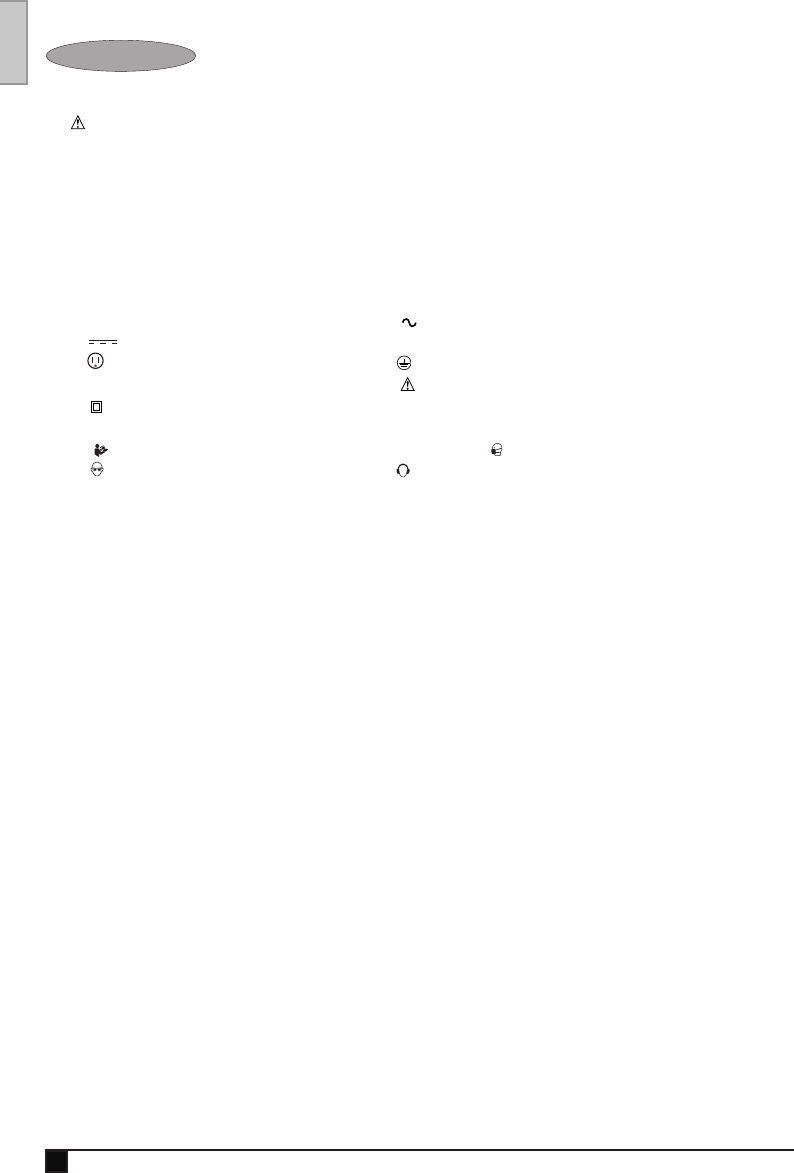
6
ENGLISH
(Original instructions)
WARNING:
Use of this tool can generate and/or disburse dust, which may cause serious
and permanent respiratory or other injury. Always use NIOSH/OSHA approved respiratory
protection appropriate for the dust exposure. Direct particles away from face and body. Always
operate tool in well-ventilated area and provide for proper dust removal. Use dust collection
system wherever possible.
SyMBOlS
The label on your tool may include the following symbols. The symbols and their definitions are as follows:
V ..................volts A ...................amperes
Hz ................hertz W ..................watts
min .............. minutes ................alternating current
............direct current
n
o ..................no load speed
................ Class I Construction ..................earthing terminal
(grounded)
................safety alert symbol
................ Class II Construction .../min or rpm...revolutions or
(double insulated) reciprocation per minute
............Read instruction manual before use ............... Use proper respiratory protection
................ Use proper eye protection ..................Use proper hearing protection
TO REDUCE THE RISK OF KICKBACK
• Keep a firm grip on saw with both hands at all times.
• Stay alert – exercise control.
• Support long overhanging materials. As the material is cut and weakens, it will sag, causing a pinched blade.
• Support large panels as shown (Figure C). Material supported only at the ends (Figure B) will lead
to blade pinching.
• Avoid sawing overhead. Material can sag and will pinch blade.
• Insure that the material to be cut is clamped (Figure E) and solidly supported and balanced on a strong,
stable and level work surface. Support the work so that the wide portion of the saw shoe is on the
portion of the material that doesn’t fall after the cut is made. Never hold cut off piece by hand (Figure D).
• Keep blades sharp and clean.
• Use fence or straight edge guide when ripping. Be careful as the cut off strip can sag or twist, closing
the cut and pinching the blade, leading to KICKBACK.
• Don’t force tool. Wood variables such as knots, hardness, toughness, wetness, pressure treated and
freshly cut green lumber can heavily load the saw which can lead to stalling. Push the saw slower
when this occurs.
• Don’t remove saw from work during a cut while the blade is moving.
• Allow saw to reach full speed before blade contacts material to be cut. Starting the saw with
the blade against the work or pushed forward into cut can lead to stalling or sudden backward
movement of saw.
• Never attempt to lift saw when making a bevel cut. This leads to blade binding and stalling.














